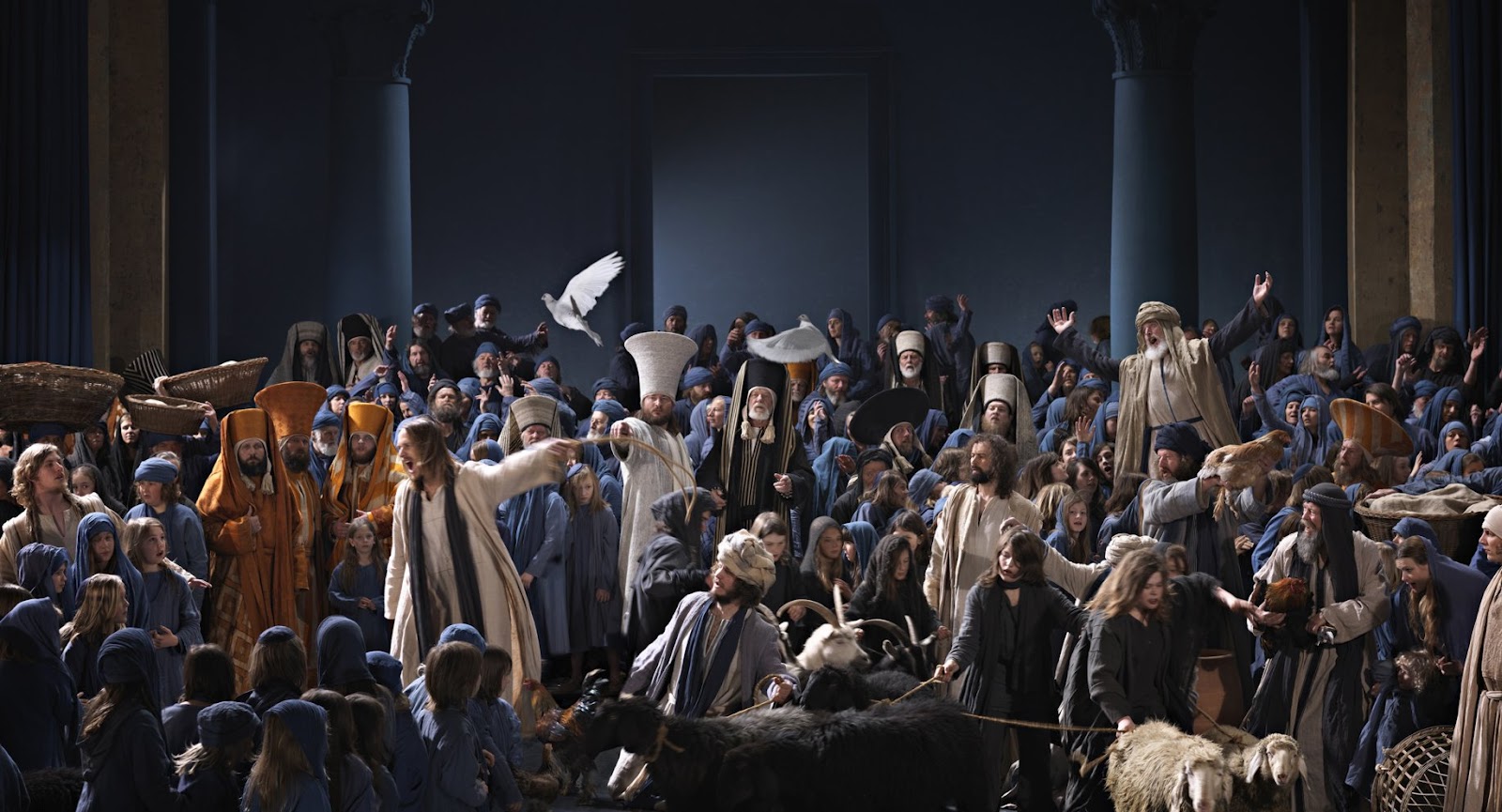
Today’s scripture goes straight to the ways in which it is different than the other three (Synoptic) gospels (Matthew, Mark, Luke). In the latter, Jesus goes to Jerusalem once. It serves as the climactic focus and end of the story of his story. Here in John, Jesus goes back and forth to Jerusalem several times. The Temple was in Jerusalem: the spiritual, political and economic capital of Israel, or Palestine (as the Romans called it).
The Temple was the “eternal dwelling place for the Name of the Lord God” (Deut 14:23). It was where you went to encounter God’s presence. Since the days of the Exodus – the deliverance of the people from slavery in Egypt – when they first truly encounter the power of Yahweh – the presence of God dwelt in the center of the people. First, it was as a pillar of fire and a column of smoke in the desert as they wandered towards the Promised Land. Then later the presence of God hovered over and resided at the center of the Tabernacle – of the “Tent of Meeting.” This was the movable worship sanctuary of the Israelites in the desert. Then in the time of King David and Solomon, the Israelites built a permanent worship space – the First Temple. God’s presence was thought to sojourn in the Holy of Holies, the most sacred part of the Temple Edifice. This Temple was later destroyed during the Babylonian invasion and occupation around 586 BCE. Later a second Temple was rebuilt, beginning in 516 BCE until it was finished by Herod the Great (the first century CE). This was where one went to encounter the God known by the name of יהוה or Yahweh. It was a name that transcends words and descriptions, meaning “I am who I am” or “I will be who I will be.” This was esteemed to be the sojourn of the God who could not be put in a box, nor captured in an image. It was the center of all Jewish life.
In John’s gospel, the Temple isn’t just a place or setting, it is presented as a character in the life of Jesus. Jesus goes back and forth to the capital, to the space in which God is thought to be encountered, known, and experienced. Yet in today’s scripture, Jesus turns things upside down. He attacks the institution that the Temple has become, stratified by regulations, seemingly paralyzed by rituals and traditions. For him, it seems to no longer be a living place, but one that needs reform, rehabilitation, liberation. He asserts a strange correlation between the Temple and his body. He advances a heresy that the God who will be who God will be is known not in the space between four walls but in the life of Jesus (whose name means Yahweh saves!) It doesn’t seem shocking to us, but for the people of his day, Jesus was turning the world upside down.
Questions for the practice of Examen & Contemplation
- What shimmers for you in this passage?
- Of what is this story a sign?
- The Temple was the place of worship of God, where one offered a sacrifice as a sign of one’s devotion, petition or faith. Jesus says that his body will replace the temple. What does that mean?
- How, where and when do you encounter, or experience, the presence of God in the world? When, how and where do you worship God?
Download a PDF Textual Study Guide for this Week’s Text HERE.